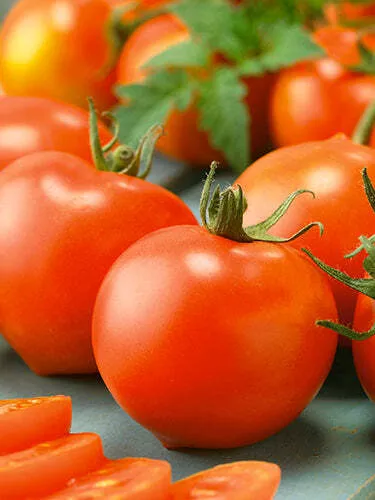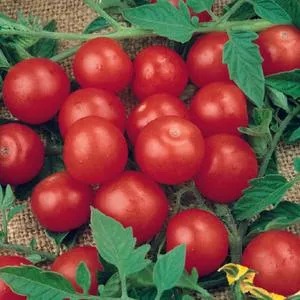Bonny Best Tomato
Price: $4.45
SKU: 3403641It is an old commercial heirloom in that is related to several other varieties. 'Bonny Best' was reportedly developed by a Mr. George W. Middleton of Jeffersonville, Pennsylvania, from a single plant selection found in a field of 'Chalk's Early Jewel' tomatoes.[1,2,3] Some time later, a further selection was made, this time from a plant of 'Bonny Best', by Mr. John Baer of Baltimore County, Maryland and introduced in 1914 simply as, 'John Baer'.[2,5]
The history of 'Bonny Best' is a bit conflicting. USDA documentation attributes its introduction to Walter P. Stokes Seed Company[1,2,3] but this is probably based on the claim made by the company themselves when they announced it in their 1908 seed annual. However, combing through our catalog archive, we found it listed as early as the 1897 fall edition of Vaughan's Seed Store catalog in their recommended hothouse / forcing tomato varieties (see photo of their catalog listing).[4]
When he announced it in 1908, Walter P. Stokes wrote, "The place of honor - the first page in the book - is given this magnificent novelty, now offered for the first time. For eight years it has been carefully re-selected each season by one of the best growers of Tomatoes in this country, for earliness, solidity of fruit, smoothness and evenness in the ripening up to the stem."
That same season, F. W. Bolgiano exclaimed, "It is a vigorous grower, enormously productive, with splendid foliage to protect the fruit from the hot sun, therefore much less liable to scald. As a shipping Tomato it is the very best. 'Bonny Best' is destined to be the leading RED Tomato in this country. Its color is an intense, velvety, glowing scarlet; fine for table or canning. Its greatest characteristic is its marvelous uniformity of size."
Mr. Bolgiano's prediction was fairly accurate. By 1910, most of the seed houses across the country were offering 'Bonny Best' to their customers. Interestingly, Stokes' former business partner, Herbert W. Johnson, did not list it until his 1911 seed annual; and only then, seemingly reluctantly. Striping the "Stokes" credit from the name, his listing simply said, "'Bonny Best' Early," with no fanfare and allocating it only enough space in the catalog to say, "A good forcing tomato. Uniform in size and smoothness." It is doubtful that Johnson Seed Company sold much of the variety with that listing and no photos.
Note: Some merchants have incorrectly started spelling this variety as "Bonnie" Best. This is simply an error. They have also begun to describe it as a synonym of 'John Baer'. This too is wrong! Our stock was grown out from USDA accession number PI 647512.
Special Groups: "Epic" Tomatoes
Harvest Timing: Main Crop / Mid-Season
Genetic Classification: Open Pollinated
Full light and cooler temps (60° to 70°) will help to prevent the seedlings from becoming too leggy. If plants become rootbound before you can safely set them into the ground, transplant them into larger pots.
Harden off plants before planting outside. Young plants are very susceptible to frost and sunburn damage. Avoid too much nitrogen. Water evenly but not in excess.
Click here to view our full tomato growing guide.
- "Descriptions of Types of Principal American Varieties of Tomatoes", USDA Miscellaneous Publication No. 160, October, 1933.
- "Yearbook of Agriculture," United States Department of Agriculture, 1937.
- "Tomato Varieties," by Gordon Morrison, Michigan State College A.E.S., Special Bulletin 290, April 1938.
- Vaughan's Seed Store, Chicago, Illinois, Fall 1897 Seed Catalog.
- "The Pedigree of Varieties of Lycopersicon Esculentum Mill.," G. A. Kemp, Canada Department of Agriculture, Lethbridge, Alberta, April 20, 1960.





